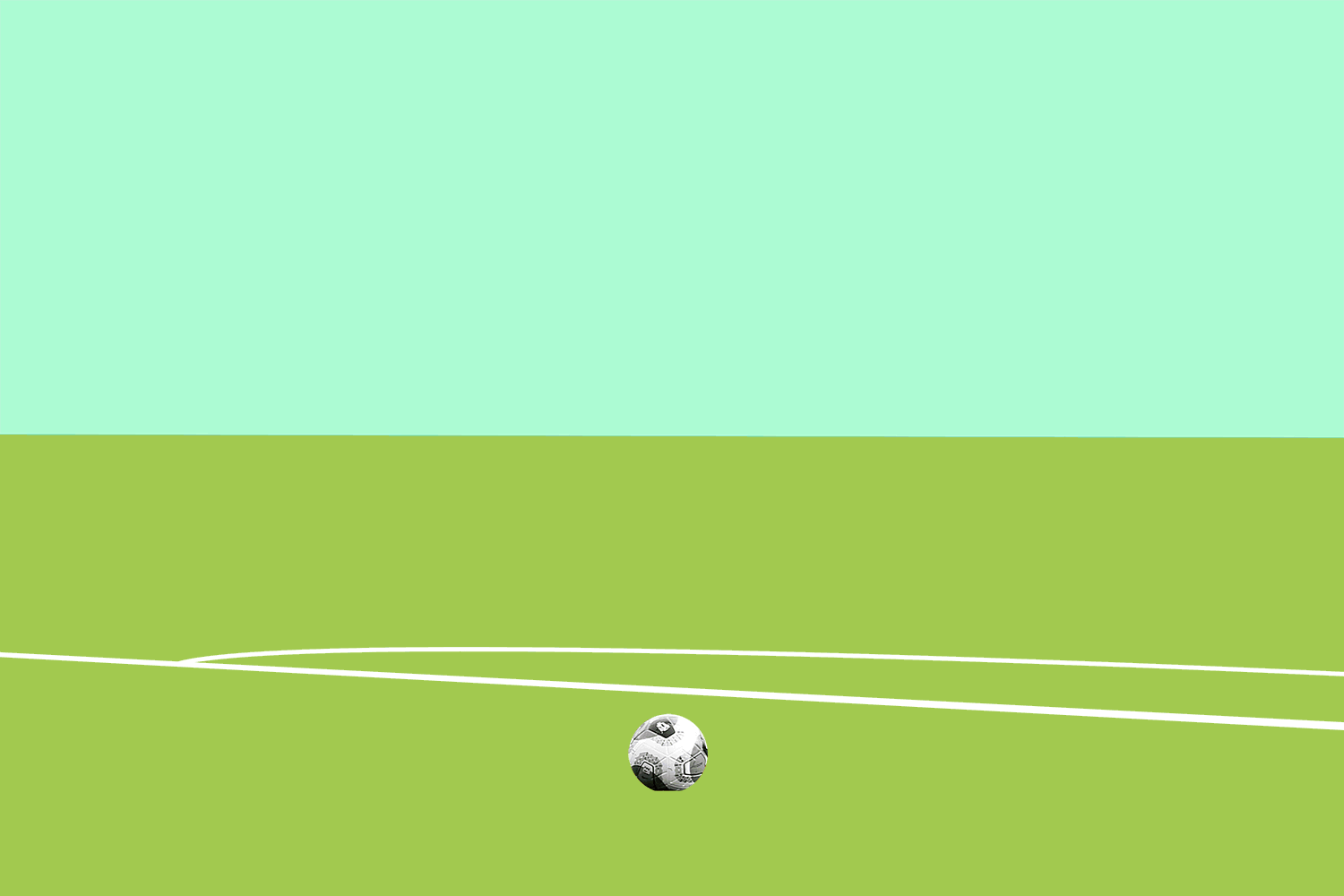
At the end of one of last weekend’s strangest games—Leicester City’s 5-2 evisceration of Manchester City, perhaps the most remarkable of an astonishing run of results—arrived perhaps the strangest moment of all. Leicester were ahead 4-2, thanks mainly to three goals from Jamie Vardy, and were given a penalty. With Vardy already on the bench, having been substituted following an afternoon of particularly hard work, the responsibility for scoring it now fell to the Belgium international Youri Tielemans. So Tielemans placed the ball on the penalty spot, stepped back a few paces, and that’s when the strange thing happened: Tielemans jogged forward and struck that penalty in a way that we almost never see.
Instead of smashing the ball to the right of Manchester City’s goalkeeper, Ederson, as Tielemans’s body language suggested that he would, he sliced his right foot quickly across the base of the ball, slashing it to Ederson’s left. Tielemans disguised his intention so brilliantly that, as the ball seared into one corner of the net, Ederson soared in the opposite direction. It was a masterpiece of deceit and not the only one that we would see from the penalty spot all weekend. Against Crystal Palace, Everton’s Richarlison inched toward the ball in a series of halting steps, as if he were a hunter trying to sneak up on a sleeping cobra. Against Brighton, Manchester United’s Bruno Fernandes discarded his traditional run-up—a sudden skip just before hitting the ball—meaning that when he delivered his fatal shot, the goalkeeper was caught unawares. And then, of course, there was the Panenka.
For so many years, provocative displays of penalty craftsmanship took a single form: the Panenka. This technique was named after Antonin Panenka, the Czech midfielder who strode toward the penalty spot in the 1976 European Championship final, and instead of driving the ball low and to the side netting, he floated it slowly and sublimely down the middle of the goal. This strike won the trophy for Czechoslovakia, as it then was known, and passed swiftly into legend. For years, it was a skill called upon only rarely, a blade wielded by only the game’s elite swordsman: see, for example, Francesco Totti in Euro 2000, Zinedine Zidane in the 2006 World Cup, or Andrea Pirlo at Euro 2012. Presently, the Panenka feels as commonplace as a large-chain coffee shop. In the same weekend that Sergio Ramos used it successfully against Real Betis, Brighton’s Neal Maupay deployed it to devastating effect against Manchester United. As the writer Graham Ruthven noted in apparent anguish, “Can anyone remember a time when not every penalty was a Panenka?”
We still can, just about, but those days are receding fast because we are now in the age of the gentrification of the Panenka: that is to say, a footballing world where so many penalties are now being given that this once-rare technique is now increasingly regarded as a reliable way of delivering results. The Premier League season is on track to have 271 penalties awarded this season; the current record is 106. There is no question what, or who is to blame for this: The twin villains of a strict handball rule and a VAR (video assistant referee) system that seeks to leave no footballing sin unpunished mean that spot kicks are being awarded like never before. Though this situation has created great outrage and frustration, much of it understandable, it has resulted in just another regular and compelling test of a footballer’s mettle and expertise.
It can be argued that Tielemans’s slider—if that is what we can call it—is just the latest iteration of this trend: one in which goalkeepers are now so athletic, so wise in anticipating the wiles of the penalty takers who stand before them, that it takes ever more craft to beat them. For years, goalkeepers have improved their chances of saving penalties by studying the previous spot kicks that outfield players have taken: Now, in those few seconds before they hit the penalty, those outfield players are studying goalkeepers. This is a pleasing irony, a neat inversion of a long-established dynamic, which makes this phase of the game feel truly gladiatorial. Now it really is a shootout in the truest sense: The opponents examine every facet of each other’s body language, in the hope that it will betray them.
With the game seemingly keen to punish any infringement in the area, and thus with no apparent end to the penalty-industrial complex in sight, it will not be unusual for a player to score two spot kicks in a game, just as Vardy did against Manchester City. It will also not be unusual to have several players on one team who are equally elite at taking them, just to keep the goalkeepers guessing. (This season, we have already seen Crystal Palace’s Roy Hodgson change his penalty taker in the middle of a match, replacing Jordan Ayew with Wilfried Zaha after the former had missed against Manchester United.) Most of all, though, we may well see yet more appreciation of the penalty specialist, that footballer who can find any part of the net with apparently equal ease. Perhaps this is the silver lining to the controversies around the intrusiveness of VAR and the handball rule: We will all become connoisseurs of this art form. Let us hope only that our tongues do not become too numb to its taste.